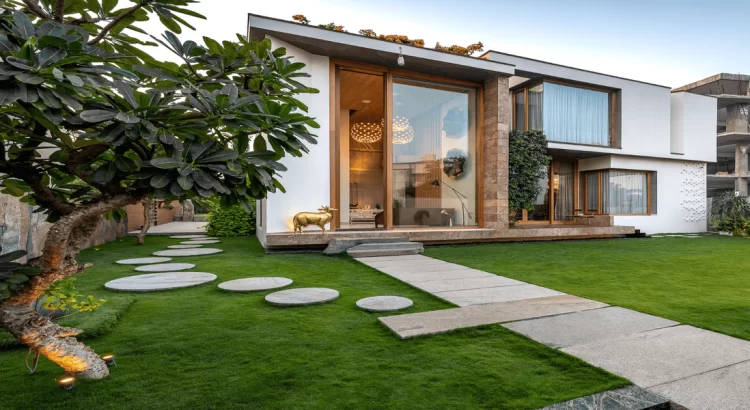Building a sustainable home is an ambitious yet rewarding undertaking. It involves creating a living space that minimizes its environmental impact while maximizing efficiency, comfort, and long-term savings. From using energy-efficient materials to incorporating renewable energy sources, there are numerous ways to make your home environmentally friendly. This guide provides a step-by-step approach to planning a sustainable home build, ensuring that your vision is aligned with your values and practical considerations.
Using Biodiversity net gain units is essential for achieving long-term ecological sustainability. These units play a pivotal role in preserving ecosystems, boosting local flora and fauna, and fostering community engagement in conservation efforts. By prioritizing biodiversity net gain, developers contribute to a healthier, more balanced environment for future generations.
1. Set Clear Sustainability Goals
The first step in planning a sustainable home build is to define what sustainability means to you. Sustainability can encompass a variety of factors, such as energy efficiency, water conservation, use of eco-friendly materials, and low carbon emissions. Identify which areas are most important to you and set clear, measurable goals. Do you want to achieve a zero-energy home? Are you aiming for a particular certification, such as LEED or Passive House? Or perhaps you are focused on reducing your carbon footprint with specific building materials or renewable energy systems. Understanding your priorities will help guide every decision throughout the planning and construction process.
2. Choose an Energy-Efficient Design
The design of your home plays a significant role in its sustainability. A well-designed home can reduce the amount of energy it consumes, ensuring that you are making the most out of every resource. Consider the orientation of your home to take advantage of natural light and heat. In colder climates, positioning your home to maximize sunlight exposure will help reduce heating costs, while in warmer climates, shading and ventilation can keep the interior cool. The size and layout of your home should also be carefully planned to ensure that it uses space efficiently, with minimal waste of energy or materials.
One of the most effective ways to improve energy efficiency is by utilizing passive design principles. This includes incorporating features such as high-quality insulation, energy-efficient windows, and airtight construction to minimize heat loss. Thermal mass, such as concrete or stone, can also be used to regulate temperature fluctuations naturally. These design choices reduce the need for mechanical heating and cooling systems, which can have a significant environmental impact.
3. Incorporate Renewable Energy Sources
Integrating renewable energy sources is a cornerstone of sustainable home building. Solar panels, for instance, can provide a substantial portion of your home’s energy needs, reducing your reliance on the grid and decreasing your carbon footprint. Depending on your location and energy consumption, you might also consider other renewable energy options, such as wind turbines or geothermal heating systems. While the upfront costs of installing these systems can be higher, they often pay for themselves over time through energy savings and government incentives or rebates.
When planning for renewable energy, it’s crucial to consider the energy requirements of your home and its location. For instance, solar panels may be more effective in regions with abundant sunlight, while a geothermal system might be better suited for areas with stable ground temperatures. Additionally, you should think about battery storage for excess energy, which allows you to store energy generated during the day for use at night or during power outages.
4. Select Sustainable Building Materials
The choice of materials in a sustainable home is paramount, as they contribute to the overall environmental impact of the build. Look for materials that are renewable, locally sourced, and have a low environmental footprint. For example, bamboo is a highly renewable material that can be used for flooring and cabinetry, while reclaimed wood can be repurposed for framing or finishes, reducing the need for new timber. Additionally, consider materials with a long lifespan, such as stone, concrete, or steel, which can withstand wear and tear over time and reduce the need for future replacements.
Choosing non-toxic, low-VOC (volatile organic compound) materials is another important consideration. Paints, adhesives, and finishes with low or no VOCs help improve indoor air quality and reduce the health impacts on occupants. Furthermore, using insulation made from recycled materials or natural fibers, such as wool or cellulose, can improve energy efficiency and minimize waste.
5. Focus on Water Conservation
Water conservation is a key component of a sustainable home, especially in areas where water is a limited resource. Start by installing water-efficient fixtures, such as low-flow faucets, showerheads, and toilets. These fixtures significantly reduce water usage without compromising performance. In addition, rainwater harvesting systems can be installed to collect and store rainwater for outdoor irrigation, reducing reliance on municipal water sources for landscaping needs.
Another water-saving feature to consider is a greywater system, which reuses water from baths, showers, and sinks for purposes such as irrigation or flushing toilets. Implementing water-saving strategies not only conserves resources but also reduces utility costs, making it a smart long-term investment.
6. Maximize Natural Ventilation
Proper ventilation is essential for maintaining indoor air quality and regulating temperature without relying heavily on energy-intensive mechanical systems. By designing your home to allow for natural airflow, you can reduce the need for air conditioning and improve comfort levels throughout the year. This can be achieved by strategically placing windows, vents, and skylights to encourage cross-ventilation and take advantage of prevailing winds.
Incorporating a well-designed passive ventilation system can also help regulate moisture levels, preventing mold growth and ensuring that your home remains healthy. Natural ventilation, combined with the use of ceiling fans and operable windows, can provide a sustainable solution for cooling your home during warm months, reducing the need for air conditioning.
7. Implement Smart Home Technologies
Incorporating smart home technologies can enhance the sustainability of your home by providing greater control over energy consumption. Programmable thermostats, for example, can adjust the temperature based on your schedule, ensuring that your home is only heated or cooled when necessary. Similarly, smart lighting systems can be programmed to turn off when not in use, reducing electricity consumption.
Other smart technologies, such as motion sensors, energy monitoring systems, and water leak detection devices, help optimize the efficiency of your home’s resources. These technologies not only improve energy efficiency but also increase the convenience and functionality of your living space.
8. Plan for Future Sustainability
When building a sustainable home, it’s important to think about the future. Consider designing your home so that it can adapt to changes in energy needs or technology. For example, leaving space for future solar panel installation or wiring your home for electric vehicle charging stations can ensure that your home remains aligned with sustainability goals as new technologies emerge. Additionally, building with durability in mind means your home will require fewer repairs and replacements over time, contributing to long-term sustainability.
Final Considerations
Planning a sustainable home build requires careful thought, from the design and materials to energy systems and water usage. By incorporating energy-efficient practices, renewable energy sources, and environmentally friendly materials, you can create a living space that not only benefits the planet but also reduces long-term costs and enhances your quality of life. With the right approach, your home can serve as a model for sustainable living—comfortable, efficient, and in harmony with the environment.





